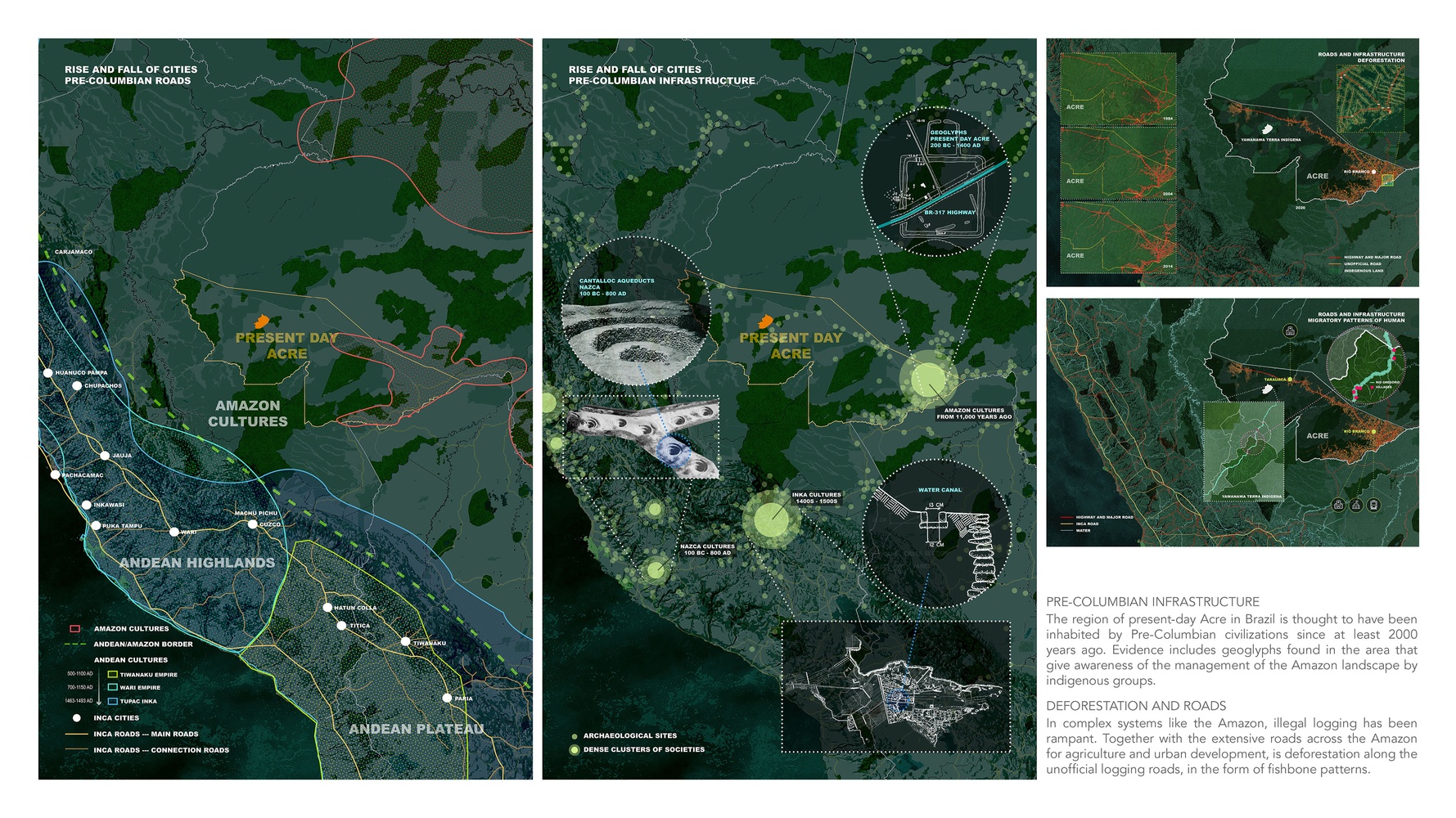Flooding and deforestation resulting from illegal logging and infrastructure construction pose a looming challenge for the Yawanawà Shukuvena Village, one of 12 reconstructed Yawanawá villages in the Brazilian Amazon. In the past centuries, forces of colonization and urban development have been eroding evidence of pre-Columbian management of the Amazon landscape. They have been taking away the authority of the Amazon rainforest from the hands of the indigenous groups. Designing for a distant future in 2180 opens an opportunity to revive the pre-Columbian ways of seeing and living with the forest.
Instead of cutting down trees to make way for roads that further fragment the forest, trees can be used to be part of the infrastructure. In the 2180 Shukuvena village, aerial roots of rubber fig trees will be trained to form continuously growing living bridges, combined with a series of sustainable, small-scale climate mitigation devices from aquaponics to algae power generation to create an interconnected infrastructure. It is a new type of rainforest landscape to be entirely constructed by the local community and function in symbiosis with the natural environment.




